Dietetics Soups
Samples of Course Materials
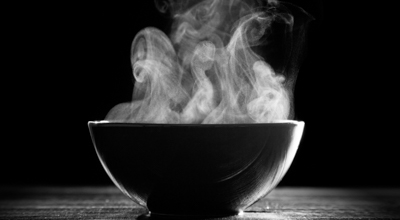
Sample of Course Materials
Two Soups & Ingredients
We start our dietetics journey in Prof. Jeffrey Pang’s office, discussing the two soups to be reviewed. This section provides a guide to what you see in the video and helps to clarify topics covered in the preparation and cooking process.
Two soups are presented, Ba Wang Hua (霸王花) soup and Shan Yao soup. The Ba Wang Hua soup focuses on clearing heat & toxins, stopping coughing, and dissolving hot phlegm.
The Shan Yao (山藥) soup mildly tonifies the spleen and benefits digestion. Hei Mu Er (黑木耳, black fungus) can be added as one of the ingredients. Hei Mu Er adds a mild invigorate blood function. Notably, the Shan Yao soup is good for the treatment of...
More in Course Materials...
Sample of Video Materials
More in Course Materials...
Sample From Ingredients Section
Ba Wang Hua (霸王花)
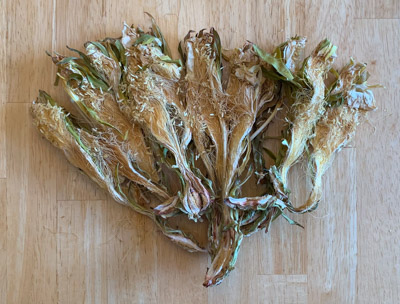
This herb is soaked in water to rehydrate and soften, and later cooked. Ba Wang Hua is sweet and enters the lung and liver channels. Ba Wang Hua (also called Jian Hua, Ba Huang Hua, Hylocereus undatus, Flos Hylocerus flower) dissolves hot phlegm nodules under the skin, which makes it appropriate for the treatment of swollen glands, lymph, and tonsils. Ba Wang Hua clears heat and toxins and….
More in Course Materials...
Sample From Ingredients Section
Xi Yang Cai (西洋菜, watercress)
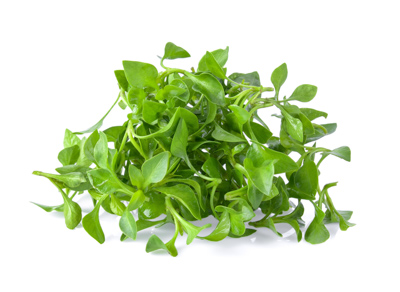
Xi Yang Cai is cold, nourishes the lungs, alleviates constipation, and is valued for its significant nutritional and medicinal benefits. Watercress contains PEITC-NAC (N-acetylcysteine conjugate of phenethyl isothiocyanate) that has been shown in the following research to inhibit the proliferation of...
More in Course Materials...
Sample From Ingredients Section
Asian Pear (Xue Li)
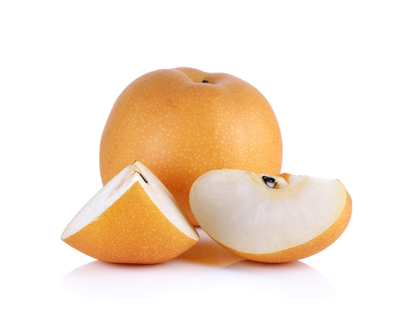
Xue means snow and Li refers to pear. Sometimes Asian pears are referred to as apple pears. The skin can be green, yellow, or white. A good quality Asian pear is juicy and crisp. Asian pears are sweet, cooling, and enter the lung and stomach channels. Asian pears nourish yin to promote the production of jin-ye (bodily fluids) and clear heat. The Asian pear treats dry coughs and...
More in Course Materials...
Sample of Course Materials
Shan Yao Soup
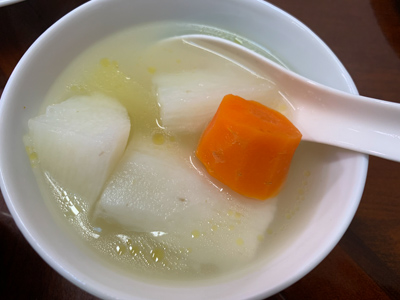
As we noted before, the Shan Yao (山藥) soup tonifies the spleen and benefits digestion. Notably, the Shan Yao soup is good for the treatment of weakness and is used to strengthen the body. The soup is also a good choice for strengthening the constitution of children, recovering from a dry cough or chronic illness, and balancing the body.
The total cooking and preparation time is approximately 30 minutes. Fill a pot with water and bring to a boil. Take pork spare ribs and cut into cubes (about 6–8 cubes) with a clever. Spare ribs have a mild tonify property and therefore combines well with the functions of Shan Yao. The use of spare ribs is for flavor. A vegetarian alternative to pork is the use of dried shitake mushrooms...
More in Course Materials...
Sample of Course Materials
Ba Wang Hua Soup
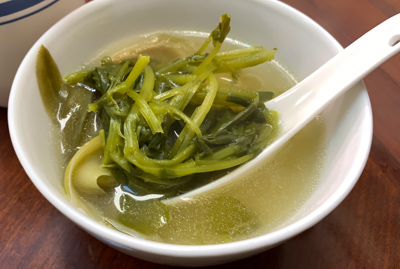
Ba Wang Hua soup focuses on clearing heat & toxins, stopping coughing, moistening the lungs, and dissolving hot phlegm. This is appropriate for coughing with sore throat or fever. Some nicknames and labels in markets say things like aloe flower, dried Da Wang flower, and similar packaging labels.
In a bowl, soak the Ba Wang Hua (霸王花) for one hour to soften the dried herb. Empty the water from the bowl fill it again with...
More in Course Materials...
Sample of Course Materials
Pu-erh Tea
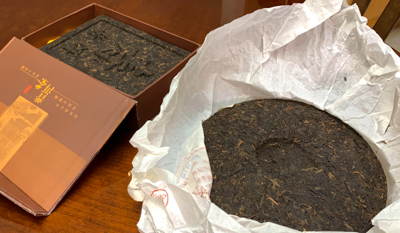
Pu-erh tea is made from a large leaf variety of Camellia sinensis, primarily grown in the mountains of Yunnan province. It is often pressed into bricks but is also available in loose-leaf form after completing a special process of pressing. The special preparations involved in Pu-erh production allow the tea to mature with age. Unlike other teas, the flavor of pu-erh improves with age.
Pu-erh, like many forms of tea, is known for its antioxidant properties. This is due in part to the presence of catechins and flavonoids in the tea. [1] Pu-erh has the special ability to raise the ‘good’ HDL cholesterol while lowering levels of the ‘bad’ LDL cholesterol...
Reference:
1. Pin-Der Duh, Gow-Chin Yen, Wen-Jye Yen, Bor-Sen Wang, and Lee-Wen Chang. Effects of Pu-erh Tea on Oxidative Damage and Nitric Oxide Scavenging. J. Agric. Food Chem., 2004, 52 (26), pp 8169–8176.
More in Course Materials...

